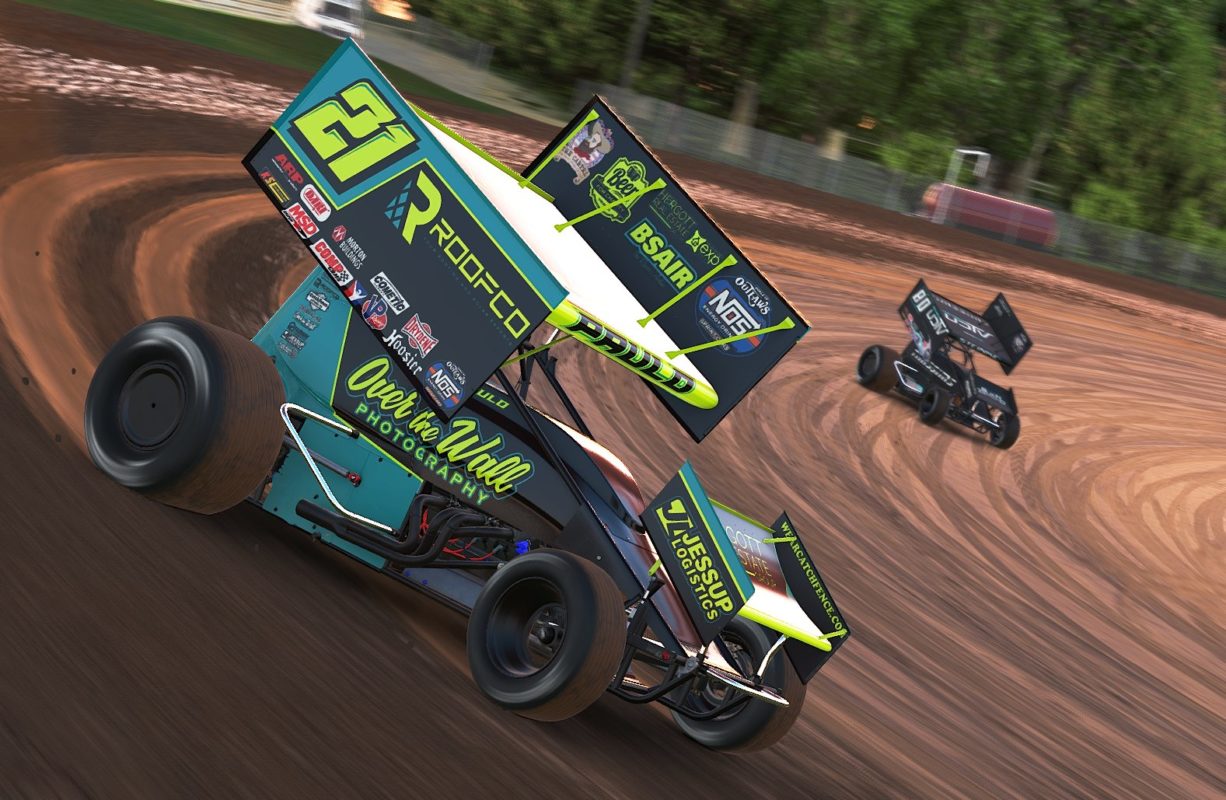Tempted to try your luck at iRacing?
You’re not alone. With the online race simulation blowing up in the wake of the coronavirus shutting down most forms of global motorsport, iRacing has skyrocketed to become an esports powerhouse — particularly in NASCAR.
If you’re going to get in on the action yourself, you’re going to need some hardware to run it — but you don’t have to dive in with an Nvidia 3080. The reality is you can get racing with a much more affordable setup. I’ve been running in iRacing on and off since it launched in August of 2009, so I have a pretty good idea for what will get you in there. But, I thought I’d put a call in to the pros to confirm. I talked to Casey Mahoney over at Carolina Sim Works on what he recommends people buy.
Why should you trust Mahoney? Well, when pro racers like Dale Earnhardt Jr., Matt DiBenedetto, and Leilani Munter needed a rig to run iRacing, they called Carolina Sim Works.
So, without further ado, let’s get in it.
What is iRacing?
If you’re a little unclear about what exactly iRacing is, don’t worry, you’re not alone. In short, it’s a driving simulator, and while that term has been thrown about a bit over the years, iRacing has consistently elevated its experience on the realism scale compared to the competition thanks to its laser-scanned cars and tracks and finely honed driving physics.
“Our simulators are powered mostly by iRacing.com,” Casey at Victory Sim said, “which in my opinion is the most realistic simulation service in the market.”
Cars range from the basic, like the Mazda MX-5 Cup car and SCCA Spec Racer Ford, numerous NASCAR Xfinity Series cars, the Dallara IR18 IndiCar and even the McLaren Honda MP4-30. iRacing even offers dirt racing now, including oval, rallycross and stadium trucks.
However, it’s the competition that really puts iRacing above the rest. The service was quick to partner with various professional racing bodies, turning this “game” into a feeder series of sorts for real-world racing. That, plus a constant string of online challenges and championships, has created the best place to go racing online, bar none.
This is why so many pros use iRacing, either as practice for their real events or just for fun. And you can rub virtual fenders with them — if you don’t mind paying for the privilege. In addition to the hardware requirements, which we’ll get to in just a moment, you’ll need to subscribe to iRacing itself.
What does it cost?
On a month-to-month basis, iRacing costs $13. Pay for a year up-front and that drops to $110, or $199 for two years. However, with all the excitement at the moment, iRacing is currently running a 50% discount, meaning two years is just $99.50 for new subscribers.
That’ll get you in the game with a good selection of starter cars and tracks, but you won’t get far without buying more. Most cars will set you back $11.95, tracks a slightly more dear $14.95. Yes, this can get expensive quickly.
Building your rig
If you want in on iRacing you’ll need a PC (or a Mac running Boot Camp), but I’m glad to report that the system requirements are actually quite low in the grand scheme of modern PC gaming. That’s at least partly because while iRacing is frequently updated and retooled, it has its roots in classic games like NASCAR Racing 2003.
GPU and CPU
For many modern PC games, the graphics processing unit, or GPU, is king. It’s what handles all the heavy lifting of making games look great. However, for a driving simulator like iRacing, the CPU is at least as important, handling the big-time calculations to make the cars feel right, not just look right.
For the CPU, iRacing requires a quad-core at a minimum, and iRacing specifically calls out the AMD FX-6300 and Intel Core i5-4430 as minimum. For a GPU, iRacing needs a unit with 2GB onboard, and cites the Nvidia GeForce GTX 660 or ATI Radeon HD 7850.
Casey Mahoney suggests you start a little higher. “There are some really good entry-level graphic cards on the market right now, you can start as low as sub-$150 for an AMD Radeon RX570 or the Nvidia 1060 for around $180. A good bang-for-the-buck combo would be an [Intel] i5-9600k for $250 and an Nvidia GTX 1660Ti video card for 300.”
Full Article
